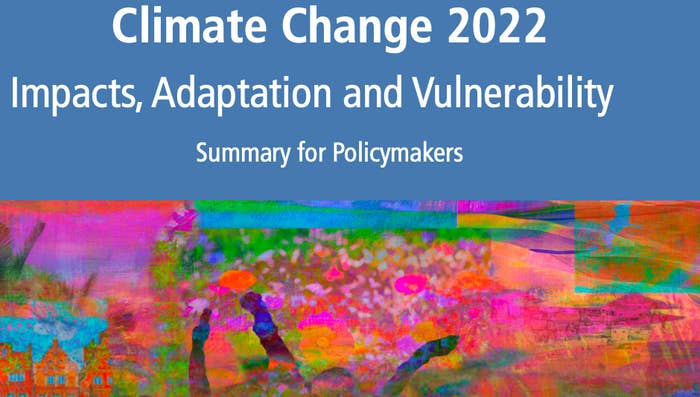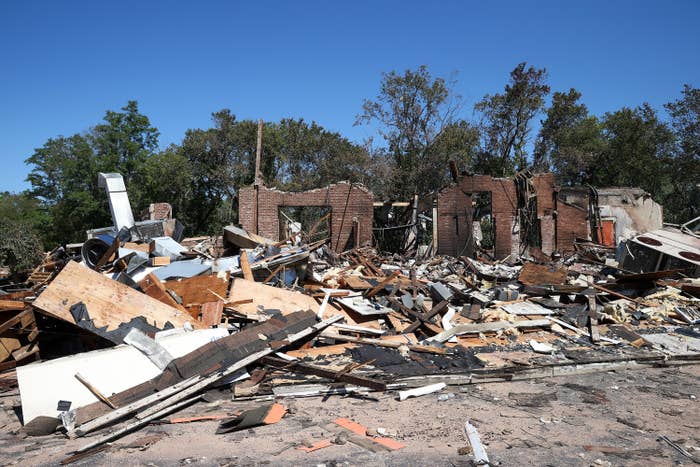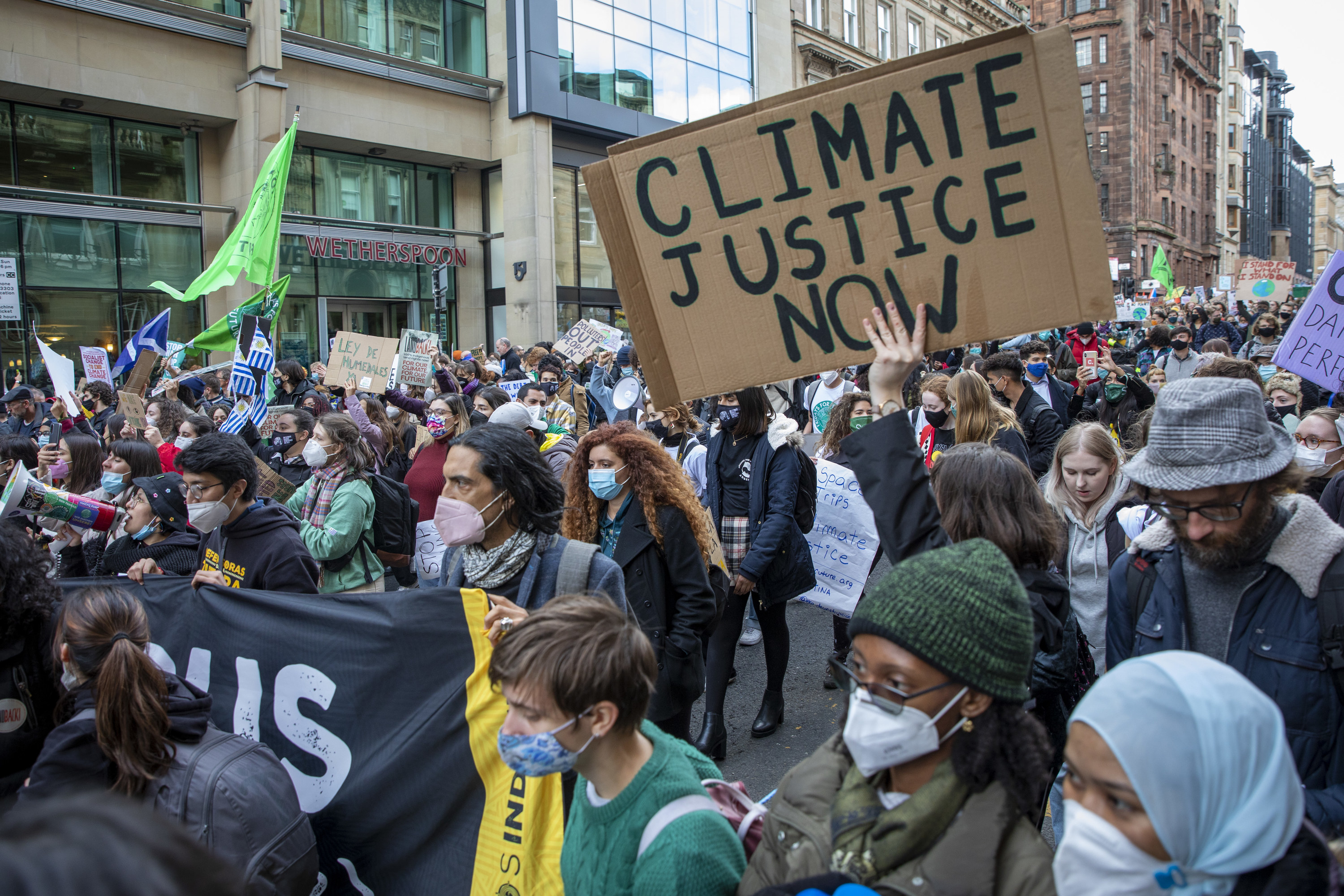
Everyone — and everything — is vulnerable to rising global temperatures, with impacts already worse than previously predicted, says a landmark climate change report released Monday. More warming, it concludes, could permanently alter the planet as we know it.
“The cumulative scientific evidence is unequivocal: Climate change is a threat to human well-being and planetary health,” hundreds of scientists wrote in a summary of the latest Intergovernmental Panel on Climate Change (IPCC) report.
Any further delay in addressing the crisis by cutting greenhouse gas emissions and sensibly adapting to warming, they warned, "will miss a brief and rapidly closing window of opportunity to secure a liveable and sustainable future for all."
Called “Climate Change 2022: Impacts, Adaptation and Vulnerability,” this is the second of three appraisals that together make up the IPCC’s Sixth Assessment Report. Steadily predicting global warming since 1990, these are the most definitive assessments on the climate crisis, produced by the world's leading body of scientific experts on climate change and approved by officials from all 195 countries around the globe.
The first report was released last August in the latest round, providing a technical analysis of current and future climate impacts. The second focuses on what those impacts mean for humanity — a litany of grim near certainties — and solutions to adapt to them. The third report, to be released in a few months, will look at ways to prevent additional warming. All of the reports follow years of scientific panels writing each chapter, carefully weighing and evaluating the latest evidence of climate change.
Scientists and policymakers from around the world gathered virtually for two weeks to finalize this report. During this time, Russia invaded Ukraine and that conflict spilled into the climate world. Some Ukrainian scientists and climate campaigners participating in the discussions last week withdrew due to the conflict, Climate Home reported.
Then over the weekend, Oleg Anisimov, the head of the Russian delegation, reportedly made a surprise apology to Ukraine. “Let me present an apology on behalf of all Russians not able to prevent this conflict,” Anisimov said, according to AFP, a moment of high drama as war rages even while climate scientists worry over Earth’s future.
The planet has already warmed 1.1 degrees Celsius compared to preindustrial levels, and the associated climate impacts are already worse than scientists had predicted, even as recently as 2014 when the previous Fifth Assessment Report was published.
This was “one of the most striking conclusions in our report,” said Camille Parmesan of the University of Texas at Austin, a report lead author, in a briefing for reporters. She then went on to list some things that have already happened but weren’t expected for current warming levels: diseases emerging into new areas, such as forests in North America; the first extinctions of species due to climate change; and the mass mortality of trees and animals with droughts and heat waves.

And the impacts felt today have major implications for what could happen in the future with warming exceeding 1.5 or 2 degrees Celsius (2.7 to 3.6 degrees Fahrenheit), the temperature goals of the Paris climate agreement that every country signed back in 2016 with the intention of staving off the most catastrophic impacts of the crisis.
Even temporarily crossing those temperature thresholds, Parmesan said, increases “the risk of irreversible impacts, such as species extinctions.”
It’s not just plants and animals that are bearing the brunt of today’s climate impacts, but also humanity. For example, people are getting sick and even dying during extreme heat events, per the report, and there’s a growing number of people suffering with mental health problems tied to the crisis.
Then there are the growing climate impacts on our food. “Climate change impacts are already stressing agriculture, forestry, fisheries and aquaculture, especially in low and mid-latitudes, but there is considerable evidence of impacts being experienced across North America,” said Cornell University’s Rachel Bezner Kerr, who was a coauthor on a chapter about food systems in the main report.
The report includes region-specific chapters, with the North American one addressing climate science denial: “Our assessment for North America, and particularly for the US, indicates that addressing these risks have been made more urgent by the delays in climate action due to misinformation about climate change science that’s led to increasing uncertainty and slowed the recognition of the risks,” said Sherilee Harper of the University of Alberta, an author on the chapter.
In response to the new assessment, US Special Presidential Envoy for Climate John Kerry said: “Denial and delay are not strategies, they are a recipe for disaster. Fortunately, we have a blueprint for action. The best scientists in the world have shown us that we must accelerate adaptation action, with urgency and at scale.”

It’s not all bad. Since the last major climate assessment, there’s been an explosion in projects and plans devoted to helping communities adapt to climate impacts. The problem is that there’s still a huge gap between the plans in place and what’s actually needed to keep as many people safe as possible. Moreover, there’s a glaring absence of such projects for low-income communities that are most vulnerable to climate change.
“A lot of adaptation options involve some level of restoring and protecting natural ecosystems,” such as restoring and rebuilding wetlands and forests, said Parmesan.
“But there are ways of doing it right and there are ways of doing it wrong,” she later added. “You’ve probably all heard about this ‘plant a trillion trees and we’ll solve global warming’ [idea]. Well, that is not the case.”
The report details a host of effective solutions, too: from restoring wetlands and rivers to boost local natural water retention in a bid to reduce flood risk; planting trees and other plants around cities to provide local cooling; putting in place “Heat Health Action Plans” to ensure early warming and responses during extreme heat; and increasing surveillance and early detection for diseases that can be spread by mosquitoes, ticks, fleas, or other means.
However, some climate solutions lose their effectiveness with increased warming, especially as it reaches 1.5 degrees Celsius, the report warns. And at this point, scientists say there’s more than a 50% chance of the planet getting that warm.
But we can get really close to keeping warming to 1.5 degrees, Parmesan said, “if we just implement what we already know we can do, and that involves absolutely everybody taking all the actions we know that are effective.”
